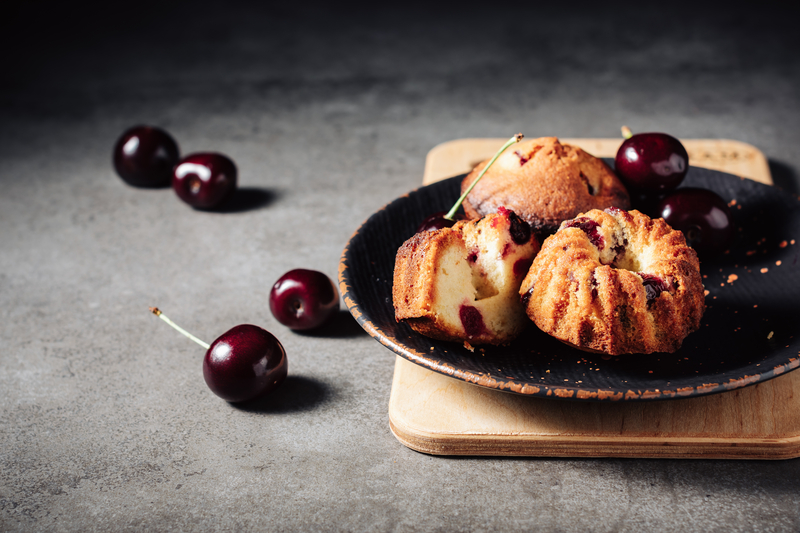 If you’re a fan of baked goods, you’ve likely come across mini bundt cakes at some point.
If you’re a fan of baked goods, you’ve likely come across mini bundt cakes at some point.
These adorable, individually sized cakes have become increasingly popular in recent years, gracing dessert tables at weddings, parties, and even coffee shops.
While they may seem like a simple treat, mini bundt cakes have a rich history and a variety of names and variations depending on where you are in the world.
In this article, we’ll explore what mini bundt cakes are called and how they have evolved over time.
The Origin of Mini Bundt Cakes
To understand what mini bundt cakes are called, it’s important to first delve into their origins.
The term “bundt” itself refers to a specific type of cake mold or pan.
This unique pan design, with its characteristic fluted and ridged shape, was inspired by the traditional German “Bundkuchen,” which means “bundled cake.”
In the early 1950s, a company called Nordic Ware introduced the Bundt pan to the United States, and it soon became a staple in American kitchens.
Mini Bundt Cakes vs. Bundt Cakes
 Before we explore the names of mini bundt cakes, it’s essential to distinguish between mini bundt cakes and their larger counterparts, simply known as “Bundt cakes.”
Before we explore the names of mini bundt cakes, it’s essential to distinguish between mini bundt cakes and their larger counterparts, simply known as “Bundt cakes.”
The primary difference lies in size.
Mini bundt cakes are smaller, individual servings made using mini bundt pans, while Bundt cakes are larger, often intended to serve a whole group or family.
What Are Mini Bundt Cakes Called in the United States?
 In the United States, mini bundt cakes are commonly referred to as “mini bundt cakes.”
In the United States, mini bundt cakes are commonly referred to as “mini bundt cakes.”
This straightforward name accurately describes the small, decorative cakes made using mini bundt pans.
They come in various flavors and can be adorned with glazes, icing, or powdered sugar, making them a delightful treat for any occasion.
International Variations
Mini bundt cakes, or similar desserts, are found in numerous countries worldwide, each boasting its distinctive name and cultural interpretation.
Here are a few illustrative instances:
- Kugelhopf (France and Germany)
 In France and Germany, a dessert similar to the mini bundt cake is known as “Kugelhopf” or “Gugelhupf.”
In France and Germany, a dessert similar to the mini bundt cake is known as “Kugelhopf” or “Gugelhupf.”
This sweet and aromatic cake is traditionally made with almonds or hazelnuts and often includes raisins or other dried fruits.
Kugelhopf is often served on special occasions and paired with a dusting of powdered sugar.
- Babka (Poland)
 In Poland, a dessert that resembles a mini bundt cake is called “Babka.”
In Poland, a dessert that resembles a mini bundt cake is called “Babka.”
Babka is typically made with a yeast-based dough and swirled with sweet fillings like chocolate or cinnamon.
It is often enjoyed during holidays and celebrations.
- Tulband (Netherlands)
 In the Netherlands, mini bundt cakes are known as “Tulband.”
In the Netherlands, mini bundt cakes are known as “Tulband.”
These cakes are made with a variety of flavors, including lemon, almond, or currant.
Tulband cakes are usually larger than mini bundt cakes but smaller than standard Bundt cakes.
They are often designed to serve several people and can come in various sizes, depending on the recipe and occasion.
Tulband cakes are often enjoyed with a cup of coffee or tea.
- Rosca (Mexico)
 In Mexico, a dessert called “Rosca” is similar to a mini bundt cake.
In Mexico, a dessert called “Rosca” is similar to a mini bundt cake.
Rosca is a ring-shaped sweet bread often adorned with colorful candied fruits and served during the holiday season, particularly on Three Kings’ Day.
The size of a Rosca can vary depending on how it is made and the specific occasion.
It’s designed to be shared among family and friends, and it often contains a hidden figurine and a dried bean.
The person who finds the figurine in their slice is considered responsible for hosting a celebration or providing tamales for the gathering, while the person who finds the bean is expected to buy the Rosca the following year.
Bottom Line – What Are Mini Bundt Cakes Called?
Mini bundt cakes, though known by different names in various parts of the world, all share a common appeal: their delightful individual size and eye-catching designs.
Whether you call them mini bundt cakes, Kugelhopf, Babka, Tulband, or Rosca, these sweet treats have a special place in the hearts and taste buds of people around the globe.
So the next time you encounter these charming cakes, you’ll not only enjoy their delicious flavors but also appreciate the cultural diversity and history they represent.


